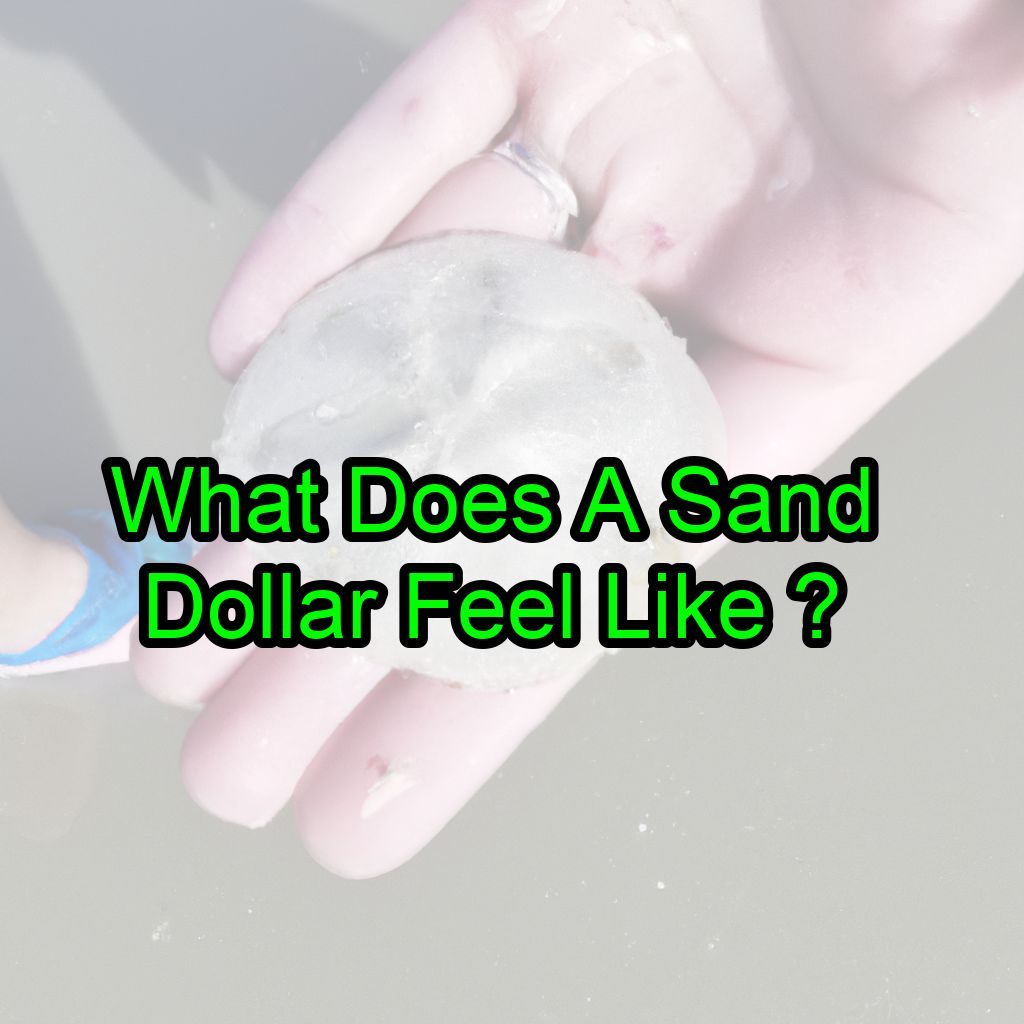When you think about sand dollars, you might think about their beautiful and intricate designs, or their place in the ocean ecosystem.
A sand dollar feels like a flat, rigid, and slightly textured object with a somewhat chalky or powdery surface. The texture is created by numerous small, petal-like patterns on the top side and a finer, grainy texture on the bottom side. The edges are typically smooth, and the overall feel is lightweight and fragile.
But have you ever stopped to wonder what a sand dollar feels like?
In this blog post, we’ll explore the different textures and sensations of sand dollars.
The Basics of Sand Dollars
Before we dive into the feel of sand dollars, let’s quickly review what they are. Sand dollars are a type of echinoderm, meaning they are in the same family as sea urchins and starfish.
They are found on the ocean floor, typically in shallow water. Sand dollars are known for their round, flat shape and their unique design, which looks like a flower with petals.
The Texture of Sand Dollars
When you pick up a sand dollar, the first thing you’ll likely notice is its texture. Sand dollars are covered in tiny spines, called cilia, that help them move along the ocean floor.
These spines create a rough, almost sandpaper-like texture on the surface of the sand dollar.

If you run your fingers over a sand dollar, you’ll feel the texture of these spines.
Depending on the size of the sand dollar, the spines may be more pronounced or more subtle.
But even on the smallest sand dollars, you’ll still feel the roughness of the cilia.
The Weight of Sand Dollars
Sand dollars are relatively lightweight, especially when compared to other shells or rocks you might find on the beach.
Because of their flat shape, they are easy to pick up and carry in your hand.
However, the weight of a sand dollar can vary depending on its size. Larger sand dollars will naturally weigh more than smaller ones, and the weight can also be affected by how much sand or debris is trapped inside the shell.
The Flexibility of Sand Dollars
One surprising aspect of sand dollars is their flexibility.
While they may appear to be rigid and solid, they are actually quite pliable.
This is because sand dollars are made up of tiny plates, called ossicles, that are connected by ligaments.
These ligaments allow the sand dollar to bend and flex, even though it may look like a solid object.
If you gently press on a sand dollar, you may notice that it gives slightly under your touch. This flexibility is important for the sand dollar’s survival, as it allows it to burrow into the sand or move along the ocean floor.
The Sensation of Holding a Sand Dollar
Finally, we come to the overall sensation of holding a sand dollar. When you pick up a sand dollar, you’ll likely feel a combination of the textures, weight, and flexibility we’ve already discussed.
But there’s something else too – a sense of wonder and curiosity.
Sand dollars are fascinating creatures, and holding one in your hand can make you feel like you’ve been given a small glimpse into the mysteries of the ocean.
As you run your fingers over the rough surface and feel the flexibility of the shell, you might start to imagine the sand dollar moving along the ocean floor, or burrowing into the sand to hide from predators.
Conclusion
In conclusion, a sand dollar feels rough, lightweight, flexible, and inspires a sense of wonder. The next time you come across a sand dollar on the beach, take a moment to pick it up and appreciate its unique texture and design.
Whether you’re a seasoned beachcomber or a casual visitor, holding a sand dollar can be a small reminder of the beauty and complexity of the natural world around us.




